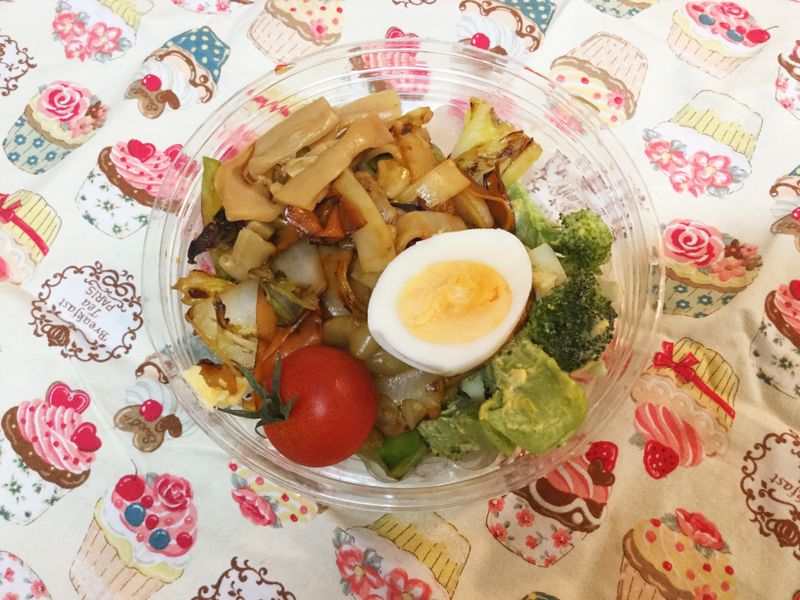Dec 30, 2018
Eating Right at Work

Elementary school lunch loaded with nutrition
I miss the days when I got school lunch on the Japan Exchange and Teaching Program, working as an Assistant Language Teacher in rural elementary and junior high schools in southern Ehime Prefecture. I was one of those spoiled ALTs who received the lunch portion of an absent student for free. In a year teaching at half a dozen schools, I got to eat all kinds of delicious sea food, since our town was right on the Seto Inland Sea, and I probably ate my weight in mikan oranges a few times over. Mikan oranges and other citrus are a large part of the prefecture’s agriculture production.
After my JET Program stint, I worked as office staff for a company in Tokyo, among other jobs. I missed the school lunches and remarked on it to my boss one day. He suggested we go over to the hospital nearby where the patient and staff cafeteria is open to visitors. He saw the look of doubt on my face, and having lived in North America, he was aware of the woeful reputation most hospital food has there. He convinced me it was good. And it was. Nurses, doctors and support staff at the hospital can eat delicious, healthful and cheap lunches there. The space was brightly lit and naturally very clean, it being a hospital. Every so often, when I didn’t bring bento box lunch, I got the daily lunch set there.
These days, I work in a private high school where students bring their own bento box lunches or get a bowl of ramen or plate of curry rice in the cafeteria. The quality can vary at schools. At other private high school cafeterias, I got well-balanced meals, but at this school, the donburi is heavy on meat and rice. They serve half a porker in their shogayaki. The sports kids need their carbs and proteins, but I need my veg, so I make my own bento most days.

Curry scented broccoli salad, stir fried kishimen noodles with vegetables
I got talking about lunch and nutrition to my guy who works for a major manufacturer. I worry about him because he has long hours, rarely gets national holidays off, and spends little time at home, which means he doesn’t have time to cook.
He put me at ease by telling me about the company cafeteria. At his company, the cafeteria provides reasonably priced meals with fish and lots of veggies. Some of the foods are grown by agricultural clients of the corporation. He says it’s delicious and satisfying. When he stays late, he can get dinner there, too.
When he does cook, he gravitates to greens, fish and low fat ingredients. His no-recipe dishes are delicious and he uses ingredients in a surprising way sometimes. He substitutes spicy sauces for salad dressings, or improvises a classic washoku dish with seasonal produce or ingredients at hand. I think his bachelor guy cooking is influenced by the creativity and quality food he gets at work.
In Japan, staff dining halls at companies and institutions are so significant for company life that somebody made a term for it, “Shashoku”, short for shain shokudo. At these cafeterias, staff in different departments and on different floors of a building can mingle. Some companies provide free meals as a reward for company productivity. And then you just need a break to put your tools down, leave your desk and relish a good meal.
Does your company or institution have a cafeteria? How’s the food? What are the pros and cons of eating in the caf?



1 Comment
ReishiiTravels
on Jan 25
I start teaching in Japan soon, and I seriously hope my schools lunches are as good as yours were! Haha